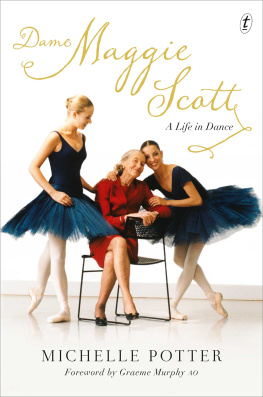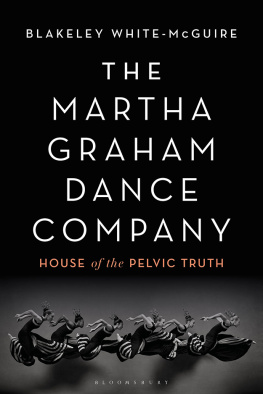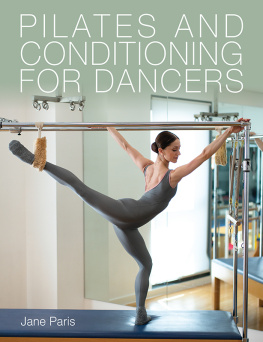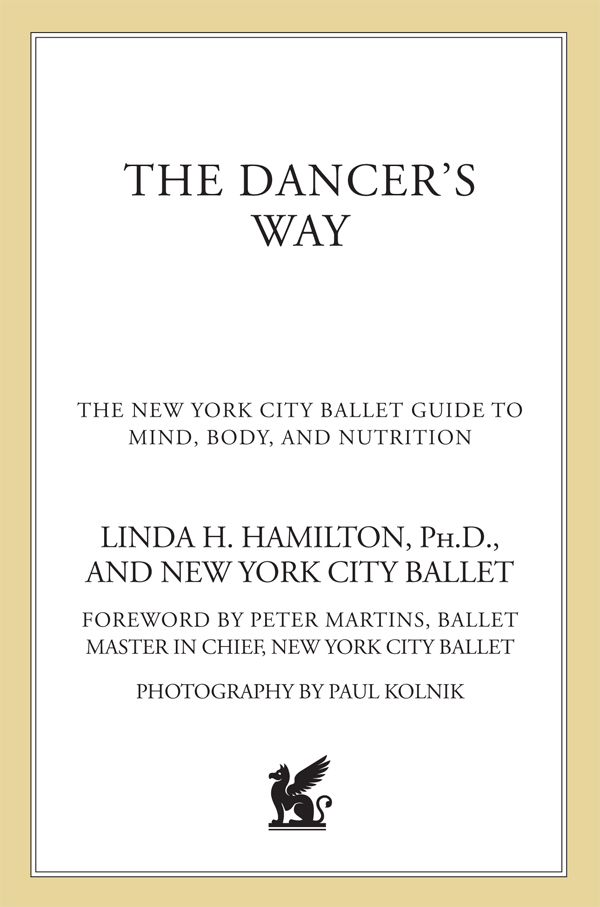Contents
Guide


The author and publisher have provided this e-book to you for your personal use only. You may not make this e-book publicly available in any way. Copyright infringement is against the law. If you believe the copy of this e-book you are reading infringes on the authors copyright, please notify the publisher at: us.macmillanusa.com/piracy.
Please note that some of the links referenced in this work are no longer active.
To all dancers who want to reach their full potential without compromising their health or careers
I am indebted to the dancers who so generously shared their time and personal insights with me, with special thanks to New York City Ballet (NYCB) members Megan LeCrone and Abi Stafford, whom I followed in our wellness program throughout their recovery from injuries. Your voices, more than anything else, put a human face to The Dancers Way . I am also deeply grateful to NYCBs core medical team for their invaluable input and to the companys artistic and administrative staff for their assistance, with gratitude to Ken Tabachnick for his thorough review of the manuscript, Ellen Sorrin for her thoughtful comments on food preparation, and Peter Martins for having the vision to make our wellness program possible. Other dance medicine specialists who deserve recognition include Phillip Bauman (orthopedist), Hilary Cartwright (Gyrotonic and yoga instructor), Katy Keller (physical therapist), Deanne Lay (Pilates instructor), Thomas Novella (podiatrist), Laura Pumillo (registered dietician), Heidi Skolnik (certified dietician), Michelle Warren (endocrinologist), and Mathew Wyon (exercise physiologist). This handbook would never have existed in its current form without the cogent feedback from my editors at St. Martins Press, Sheila Curry Oakes and Alyse Diamond, Dance Magazine editors Hanna Rubin and Wendy Perron, and my agent, Al Zuckerman at Writers House. On a more personal note, I am most thankful for the unwavering love and support of my husband, Dr. William Hamilton, and my mother, Helen Homek.
Dancers lives are centered around their bodies. Throughout their careers, they face the difficult challenge of remaining slender and graceful while maintaining exceptional strength and flexibility. When watching them perform, one forgets that these elegant beings who bring beauty to the worlds stages with seemingly effortless leaps and lifts are continually faced with the same physical demands as world-class athletes.
I have been very fortunate to have had the opportunity to participate in the evolution of New York City Ballet, and my involvement has enabled me to reflect on the fundamental role our bodies have played in our history. When George Balanchine founded the company in 1948, he revolutionized ballet. Balanchine fused traditional classical vocabulary with modern concepts to create mysterious and striking combinations, and dancers bodies were the ideal medium for his neoclassical language. Under his leadership and artistic direction, steps and movements became heightened, quickened, and extended.
While Balanchines transformations enriched the dance world and attracted a wider audience, they also placed greater demands on his dancers bodies. He acknowledged the athletic aspects of dance by hiring a company physical therapist and orthopedist. Today we have had to adjust to the even larger demands that are being placed on NYCB dancers. Balanchines ballets are being performed by dancers who jump higher, move with greater agility, and dance with greater versatility than those a generation ago. Furthermore, our repertory of over 150 ballets is continuing to grow and expand in its diversity. In the same season, our dancers can be expected to perform Balanchines neoclassical movements, a Broadway-influenced ballet by Jerome Robbins, and new works by contemporary choreographers. In response to this increased versatility and the growing desire for constant renewal through innovative forms of choreography, a new emphasis has been placed on decreasing the stress on different parts of the body that accompanies the adaptation to diverse technical styles.
Our wellness program was founded in 2001 to respond to the rising awareness of the physical demands of ballet. The goal has been to cultivate our dancers health and performance potential by supplementing medical treatment with the knowledge necessary to prevent injury. The programs health-care professionals consist of psychologist Linda Hamilton, orthopedist William Hamilton, physical therapist Marika Molnar, chiropractor Lawrence DeMann, Jr., and nutritionist Joy Bauer. Since the programs inception, the companys workers compensation claims and disability have been reduced. Our dancers are now more aware of the consequences of unhealthy behaviors, such as lack of sleep or a poor diet. They also possess a greater understanding of their bodies, recognize the benefits of cross-conditioning, and are committed to increasing their energy levels and optimizing performance.
Although ballet requires more training than a high-level contact sport, its athleticism will always be overshadowed by its artistry. Ballet dancers have reached a keen understanding of this reality. Not only are our dancers committed to achieving technical precision, but they are dedicated to making their movements look effortless. They are conscious of the beautiful illusions they create and seek to inspire audiences through their art.
The Dancers Way highlights the techniques and strategies advanced by the NYCB wellness program; however, anyone with an interest in self-improvement can learn from the struggles and achievements of our dancers. This guide reveals the extraordinary preparation behind the mysterious arrangements that we see onstage. Our dancers today are remarkably self-aware. Their commitment drives them to understand their bodies, acknowledge their vulnerabilities, and respond effectively to the physical demands of the dance world. Yet this awareness extends beyond themselveswhen I observe them working toward improvement and navigating change, I see them glow with confidence.
I am extremely grateful to Linda Hamilton and the other dedicated and talented members of our medical team, and I thank them for their ongoing commitment to enhancing the health and strength of our dancers. As the dance world evolves, our wellness program will continue to prove that the more we learn, the more we can achieve.
PETER MARTINS
Ballet Master in Chief
New York City Ballet
First and foremost, I want you to know that we careabout you, your hopes, and your dreams. Although The Dancers Way is directed toward the 11 million people engaged in some form of dance in the United States, anyone with an interest in fitness can benefit from our holistic approach to exercise. The book New York City Ballet Workout by Peter Martins and New York City Ballet, with Howard Kaplan, showed readers how to build leanness and flexibility in the muscles and limbs through the magic of ballet. This guide takes you to the next level to achieve peak performance by sharing the secrets of dancers in one of the worlds greatest companies.
Peter Martins, Ballet Master in Chief of New York City Ballet, opened the door to our wellness program in 2001, based on research I conducted with my colleagues, William G. Hamilton, M.D., Marika Molnar, P.T., and Lawrence DeMann, Jr., D.C. We designed the program to help dancers reach their potential without compromising their health, with annual screenings, educational seminars, cooking classes, and individual counseling. Traditionally, dancers and companies focus on technique, treating problems after they occur. Now we recognize that the beneficial aspects of dancing can be undermined by risk factors such as constant stress, sleep deprivation, and poor nutrition. What makes our approach so special is that in only three years, it has cut disability in NYCB by 46 percent, impressive considering that ballet is more physically and mentally demanding than professional football.









